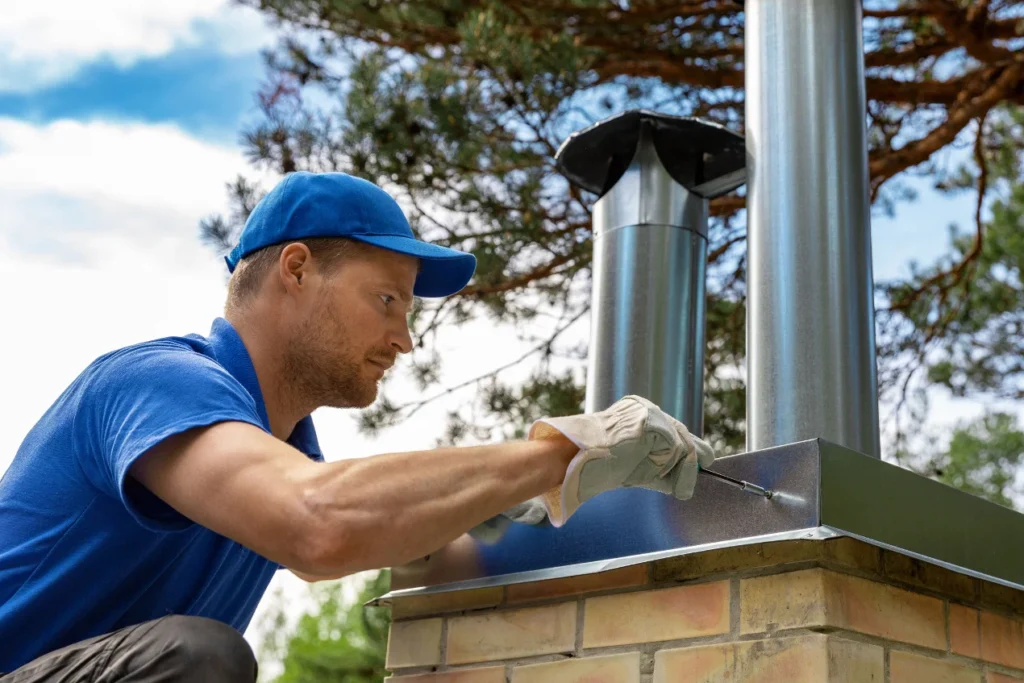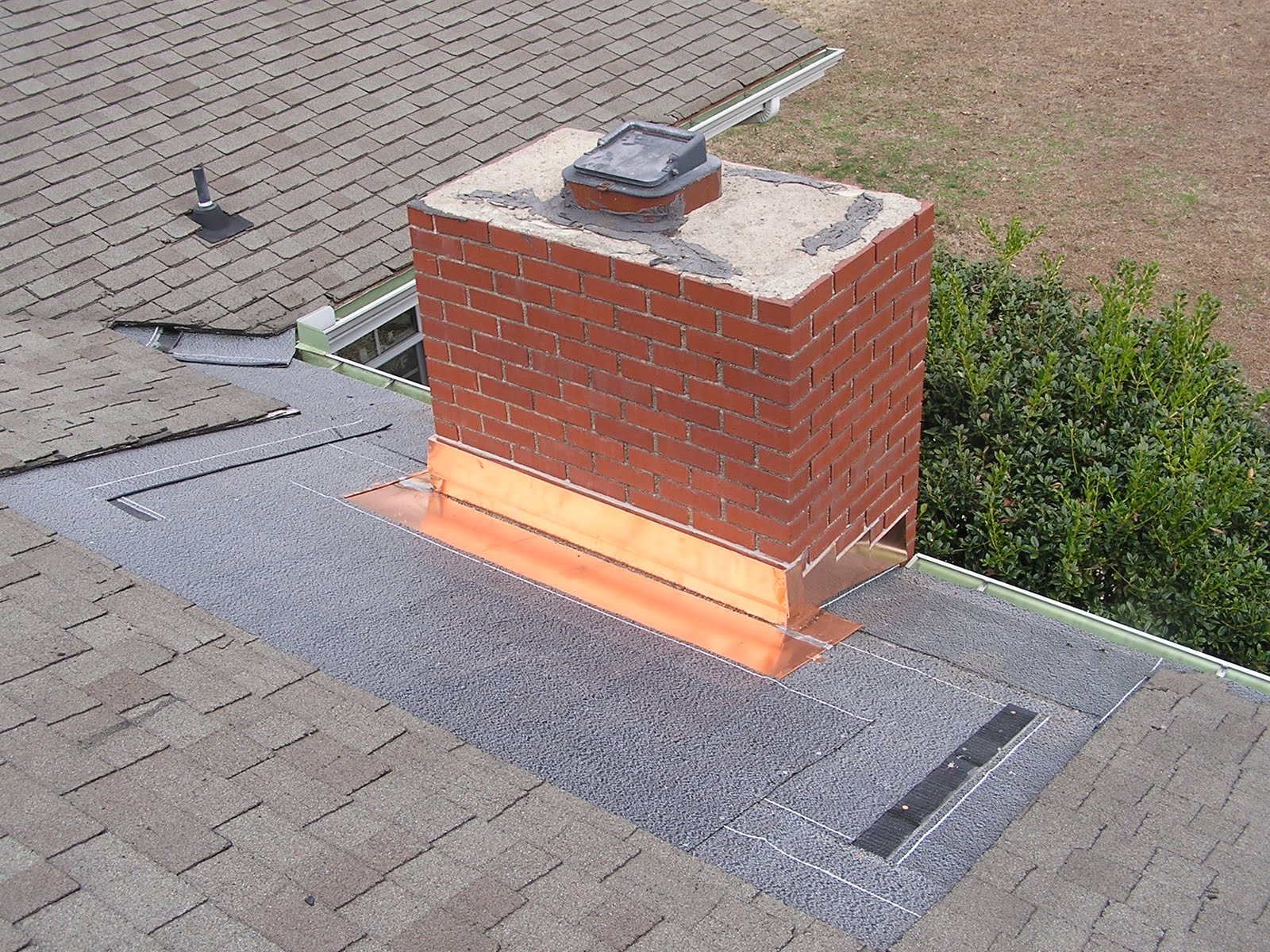It’s a stormy night in Southampton. The rain lashes against your roof, and as you sit with a cup of tea, you notice a faint drip in the corner of your living room right beneath the chimney. The cause? Often, it’s a small but vital detail: your chimney flashing.
The question is, should you repair it or replace it? Let’s break it down in simple terms.
What Is Chimney Flashing?
Chimney flashing is a protective seal—usually made from lead or another durable metal—that covers the joint where your chimney meets the roof. Its job is simple but essential: keep water out.
Without it, rainwater can seep into the roof structure, causing rot, mould, and costly damage. Think of flashing as the waterproof jacket for your chimney.
Why Chimney Flashing Fails
Even the best flashing doesn’t last forever. Here are the most common reasons it breaks down:
- Southampton weather – Coastal winds, driving rain, and salt exposure can corrode materials over time.
- Poor installation – If flashing isn’t fitted correctly, gaps form quickly.
- Age – Metal flashing can last decades, but eventually, it weakens.
- Roof movement – Seasonal expansion and contraction can loosen the seal.
- Moss and debris – Trapped moisture can speed up deterioration.

Repair or Replace?
Here’s a quick guide to help you decide:
| Option | Pros | Cons | Typical Southampton Cost |
|---|---|---|---|
| Repair | Quick, cheaper, less disruption | May only be a short‑term fix if damage is extensive | £150–£350 |
| Replace | Long‑lasting solution, stops recurring leaks | Higher cost, more labour | £400–£800 |
When to Call a Professional
If you notice any of these signs, call a roofer straight away:
- Water stains near the chimney or ceiling.
- Loose or missing flashing pieces.
- Rust or visible gaps between chimney and roof.
- A musty smell in the loft after rain.
- Damp patches on internal chimney breast walls.
Tip: In Southampton, storms can worsen flashing damage overnight. Don’t delay repairs.
A Local Example
Last winter, after a series of heavy gales, a homeowner in Portswood noticed damp patches near her fireplace. Our inspection revealed that salt‑laden coastal winds had corroded the lead flashing in less than 15 years. A full replacement stopped the leak, and we added extra sealing to withstand the city’s unpredictable weather.
How Repairs Work
If your flashing is mostly intact, a roofer may:
- Remove damaged sealant.
- Re‑secure loose sections.
- Add new waterproof sealant or lead replacement.
This process is quick—often done in a few hours—and is ideal if the underlying metal is sound.
When Replacement Is the Better Choic
Full replacement is recommended when:
- More than 30% of the flashing is damaged.
- The flashing has rusted through.
- The roof is being replaced anyway.
In these cases, new lead or a modern alternative is fitted, ensuring a watertight seal for years.
Preventing Future Problems
- Annual inspections – Especially after winter storms.
- Keep roof clear – Remove moss and debris.
- Check after severe weather – Wind uplift can loosen flashing.
- Choose an experienced local roofer – Correct fitting is key.
Why Choose Us
- Nearly 10 years’ local roofing experience.
- Specialists in chimney flashing repair Southampton and full replacements.
- 24/7 emergency response for storm damage.
- Fully insured and compliant with UK roofing standards.
Whether it’s a quick fix or a complete replacement, our team ensures your home stays dry and protected.
Don’t wait for a small leak to turn into costly roof damage. Call us today on 07742076612 for a free chimney flashing inspection in Southampton. Or request a quote online—our emergency team is ready 24/7.
FAQ
Q: How long does chimney flashing last?
A: With proper installation and maintenance, lead flashing can last 20–30 years in Southampton’s climate.
Q: Can I fix chimney flashing myself?
A: Small sealant repairs are possible, but working on a roof is dangerous. Professional repair ensures safety and compliance with UK building standards.
Q: Is lead still the best material for flashing?
A: Yes—lead remains popular for its flexibility and lifespan, but alternatives like aluminium or zinc are sometimes used.
Q: Will my home insurance cover flashing repairs?
A: Some policies cover storm damage but not wear and tear. Check your policy.
Q: What’s the fastest way to stop a chimney leak?
A: Temporary sealant can help in emergencies, but professional repair is essential for a long‑term fix.



